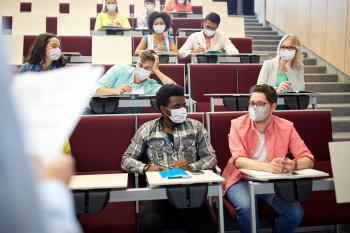College students head back to campus in an uncertain time
Each fall, nearly 20 million young adults begin college, with nearly 12 million attending full time.1 The first six weeks of freshman year are a particularly vulnerable time for underage college drinking, harmful drinking, and alcohol-related consequences. Student expectations and social pressures at the start of the academic year contribute to this vulnerability. Additionally, due to widespread virtual classes during the 2020-2021 school year, many more students than usual will be experiencing life away from home for the first time this fall.

The pandemic has and will likely continue to shape drinking patterns among college students. In 2020 compared to 2019, researchers saw that the shift toward online education combined with social isolation brought an overall decline in alcohol consumption among college students. However, among students who didn’t change residences—those that remained at home or who stayed on campus—some individuals increased their drinking.2,3 Research also suggested a shift in motivation among some young adults—including college students—from drinking to socialize to drinking to cope.4,5 In light of the evolving pandemic, it is especially important this fall for college students to take the necessary measures to protect their health and well-being, particularly since many schools have resumed in-person or hybrid classes.
During this uncertain time, it is especially important for parents, students, and college administrators to understand the risks associated with alcohol use—families and schools can play an integral role in combatting college drinking.
For Parents: To learn more and find resources on college drinking and talking to your college-age son or daughter, visit:
For College Administrators: To learn more about effective evidence-based interventions, visit:
References:
1 National Center for Education Statistics. Fast facts. https://nces.ed.gov/fastfacts/display.asp?id=372. Accessed August 27 2021.
2 Jaffe, A. E.; Kumar, S. A.; Ramirez, J. J.; et al. Is the COVID-19 pandemic a high-risk period for college student alcohol use? A comparison of three spring semesters. Alcoholism, Clinical and Experimental Research, 45(4), 854–863, 2021. PMID: 33755213
3 White, H. R.; Stevens, A. K.; Hayes, K.; et al. Changes in alcohol consumption among college students due to COVID-19: Effects of campus closure and residential change. Journal of Studies on Alcohol and Drugs, 81(6), 725–730, 2020. PMID: 33308400
4 Fruehwirth, J. C.; Gorman, B. L.; Perreira, K. M. The effect of social and stress-related factors on alcohol use among college students during the Covid-19 pandemic. The Journal of Adolescent Health : official publication of the Society for Adolescent Medicine, S1054-139X(21)00327-X, 2021. Advance online publication, 2021. PMID: 34353720
5 Graupensperger, S.; Fleming, C. B.; Jaffe, A. E.; et al. Changes in young adults' alcohol and marijuana use, norms, and motives from before to during the COVID-19 pandemic. The Journal of Adolescent Health : official publication of the Society for Adolescent Medicine, 68(4), 658–665, 2021. PMID: 33781471

